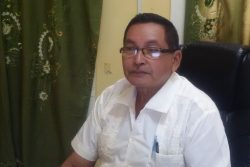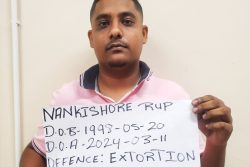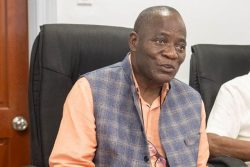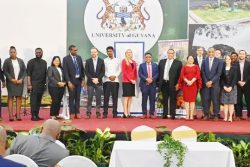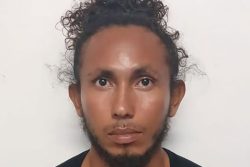 In the news last week, more than 2,000 Tunisians protested in the country’s capital against proposed legislation that would provide amnesty in exchange for reimbursing the embezzled funds for officials being prosecuted for alleged corruption. This followed a call to protest from more than 50 non-governmental organisations. The government argued that this course of action was necessary in order to improve the investment climate. Six years ago, there was an uprising over various grievances, including state corruption, which saw the removal of the long-time dictator Zine El Abidine Ben Ali.
In the news last week, more than 2,000 Tunisians protested in the country’s capital against proposed legislation that would provide amnesty in exchange for reimbursing the embezzled funds for officials being prosecuted for alleged corruption. This followed a call to protest from more than 50 non-governmental organisations. The government argued that this course of action was necessary in order to improve the investment climate. Six years ago, there was an uprising over various grievances, including state corruption, which saw the removal of the long-time dictator Zine El Abidine Ben Ali.
In the Netherlands, one of the world’s largest wind farms involving 150 turbines was recently commissioned to supply some 785,000 households with renewable energy over the next 15 years. It will also help reduce emissions of carbon-dioxide emissions by 1.25 million tons. Fossil fuels currently account for 95% of the country’s energy supply. The government is committed to ensuring that some 14% of the country’s energy comes from renewable sources such as wind and solar power by 2020, and 16% by 2023. The aim is to be carbon neutral by 2050.
In Canada, a large area from Ottawa to Montreal and beyond has been under flood waters over the last month due to a combination of torrential rains and melting snow that caused rivers to overflow their banks. Approximately, 4,000 homes in low-lying areas were flooded, and nearly 3,000 residents have been evacuated. During his tour of the area, the Canadian Prime Minister warned citizens to expect more floods, wildfires and other natural disasters more than ever before, citing climate change as the main reason. Water levels in Lake Ontario have also been on the rise, prompting the authorities in Toronto to close the Toronto Islands to the public.
More than half the buildings in the islands are threatened by water levels that are expected to keep rising for several weeks even if there is no more rain. Thousands of sandbags have been set up along the shoreline of the islands, and industrial pumps are removing 500,000 litres of water per hour from the communities.
And in Antarctica, parts of the continent are becoming greener and less snowy, because of rising temperatures.
Today, we discuss the 2017 U.S. Department of State International Narcotics Control Strategy Report (INCSR 2017) which was issued in March 2017 covering the period 1 January to 31 December 2016.
U.S. legislative requirements on drug trafficking
U.S. legislation provides for the President to submit an annual report to Congress identifying each country determined by the President to be a major drug-transit country or major illicit drug producing country. The President is also required to identify any country that has failed to make substantial efforts to adhere to international counter-narcotics agreements and to take certain counter-narcotics measures. Under U.S. law, the United States is prohibited from providing assistance to any country designated as having “failed demonstrably” in relation to the above, unless the President determines that the provision of such assistance is vital to U.S. national interests, or that the country, at any time after the President’s initial report to Congress, has made “substantial efforts” to comply with the counter-narcotics conditions in the legislation. This prohibition, however, does not affect humanitarian, counter-narcotics, and certain other types of assistance that are authorized to be provided notwithstanding any other provision of law.
The INCSR 2017 identified the following 22 countries as major illicit drug producing and/or drug transit countries: Afghanistan, Bahamas, Belize, Bolivia, Burma, Colombia, Costa Rica, Dominican Republic, Ecuador, El Salvador, Guatemala, Haiti, Honduras, India, Jamaica, Laos, Mexico, Nicaragua, Pakistan, Panama, Peru, and Venezuela. Of these, Bolivia, Burma, and Venezuela were designated as having “failed demonstrably” during the previous 12 months to adhere to their obligations under international counter-narcotics agreements and take the measures set forth in the U.S. legislation.
Report on drug trafficking in Guyana
Guyana continues to be a transit country for cocaine destined for the United States, Canada, the Caribbean, Europe, and West Africa. Cocaine originating in Colombia is smuggled to Venezuela and onward to Guyana by sea or air. This is due to Guyana’s “poorly monitored ports, remote airstrips, intricate river networks, porous land borders, and weak security sector capacity… Cocaine is often concealed in legitimate commodities and smuggled via commercial maritime vessels, air transport, human couriers, ‘go-fast’ boats or various postal methods. The influence of narcotics trafficking is evident in the country’s criminal justice systems and other sectors”.
The report acknowledged the passing of various legislation and other measures aimed at curbing the flow of cocaine through the country, including amendments to the Anti-Money Laundering and Countering the Financing of Terrorism (AML/CFT) Act of 2009, the strengthening of the Financial Intelligence Unit (FIU), the launching of a new National Drug Strategy Masterplan and the creation of a National Anti-Narcotics Agency. It, however, bemoaned the understaffing of the Special Organized Crime Unit (SOCU) as well as the failure to fully implement the provisions of the Inter-American Convention against Corruption, such as the seizure of property obtained through corruption.
U.S. legislative requirements on money laundering
Under U.S. legislation, a major money laundering country is defined as one whose financial institutions engage in currency transactions involving significant amounts of proceeds from international narcotics trafficking. However, according to the report, the complex nature of money laundering transactions makes it difficult in many cases to distinguish the proceeds of narcotics trafficking from the proceeds of other serious crime. In addition, financial institutions engaging in transactions involving significant amounts of proceeds of other serious crime are vulnerable to narcotics-related money laundering.
The report identified 81 countries as major money laundering countries whose financial institutions engage in transactions involving significant amounts of proceeds from serious crime. For the Caribbean, the list includes Guyana, Trinidad and Tobago, Barbados, Jamaica, The Bahamas, Belize, the British Virgin Islands, the Cayman Islands, Cuba, the Dominican Republic, the Eastern Caribbean, Haiti, and Suriname.
Report on money laundering in Guyana
Guyana’s geographic location makes it attractive for transnational organized crime groups, including human and drug trafficking organizations. According to the report, “There is a culture of using informal networks to move money between Guyana and the diaspora, and Guyana has a large cash-based economy. Many criminals use cash couriers or familial networks to move large sums of money between Guyana and the United States. Unregulated currency exchange houses also pose a risk, as they are used both for the exchange of currency and to transfer funds to and from the diaspora. Additionally, casinos are legal in Guyana and pose a risk for money laundering. Guyana has one casino”.
The report referred to the assessment of the Caribbean Financial Action Task Force (CFATF) in 2013 of significant strategic deficiencies in Guyana’s anti-money laundering legislation and its declaration of the country being a money laundering risk to the international financial system. CFATF nevertheless acknowledged the creation of an action plan to address noted deficiencies and the passing of amendments to the AML/CFT Act of 2009, including a definition of beneficial ownership and the broadening of the definition of property subject to confiscation, among other improvements. As a result, it has removed Guyana from its list of countries that have not taken adequate measures to address the issue of money laundering.
The report identified the primary sources of laundered funds to be narcotics trafficking and corruption and asserted that “the laundering of proceeds from other illicit activities, such as human trafficking, contraband, illegal natural resource extraction, and tax evasion, is substantial. Common money laundering typologies include the use of fictitious agreements of sale for non-existing precious minerals to support large cash deposits at financial institutions; cross-border transport of small volumes of precious metals, declared as scrap or broken jewelry to avoid scrutiny by the relevant officials and the payment of relevant taxes and duties; TBML using gold; and the use of middle and senior-aged cash couriers for the cross-border transport of large sums of U.S. dollars”.
The report noted that although the AML/CFT Act 2009 gives the FIU authority to investigate alleged money laundering, the latter does not have the capacity to conduct such investigations. As a result, the FIU refers matters to the Special Organised Crime Unit (SOCU) of the Police Force. However, the effectiveness of these agencies at investigating money laundering is limited, as they lack adequate human resources, training to ensure successful prosecutions, and a strong interagency network. The lack of cooperation by the business community also hinders Guyana’s anti-money laundering efforts. The report further stated that “Despite its limited staffing capacity, in February, the SOCU seized roughly $80,000 worth of local and foreign currency and arrested two persons suspected of money laundering. This was the first seizure under Guyana’s updated AML legislation”. The report offers the recommendation that “Guyana should raise awareness and understanding of AML laws and implement procedures, through training and the publication of guidelines, within the judicial system and in agencies with the authority to investigate financial crimes. STR requirements, wire transfers, and customer due diligence regulations should be strengthened and additional resources extended to the FIU and SOCU”.



